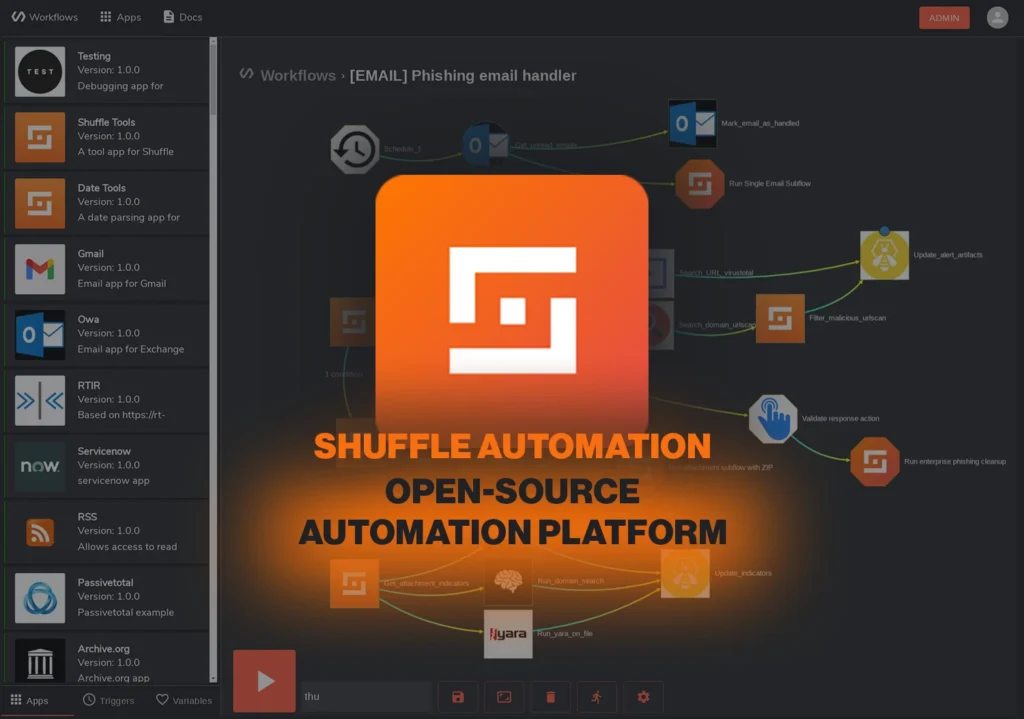In today’s rapidly evolving business landscape, small and medium-sized businesses (SMBs) grapple with the twin challenges of maintaining security and enhancing operational efficiency. One avenue that consistently proves beneficial is the integration of AI-driven workflows and automation strategies. By embracing solutions like Shuffle, an open-source automation platform tailored for security professionals, SMBs can streamline their operations while bolstering their security postures.
Automation isn’t merely a trend; it’s a necessity for modern businesses. The complexity inherent in security operations can overwhelm even the most seasoned professionals. This is where platforms like Shuffle come into play, offering a feature-rich workflow editor that simplifies the automation process. By implementing such tools, SMBs can reduce human error, ensure consistent responses to incidents, and free up valuable resources for higher-level strategic initiatives.
One of the most compelling advantages of integrating AI into workflows is the enhancement of decision-making capabilities. AI can analyze vast amounts of data, identify patterns, and provide insights that would be impossible or impractical for a human to accomplish in a reasonable timeframe. This allows SMB leaders to make informed decisions quickly, responding proactively rather than reactively. For instance, by utilizing Shuffle’s capabilities, organizations can set up automated responses to common security incidents. This could transform a situation that may take several hours of manual intervention into an automated process completed in minutes.
Incorporating a platform like Shuffle can yield significant returns on investment (ROI) for SMBs. Consider a scenario where a business experiences frequent phishing attempts. Rather than relying on manual processes to handle each incident, an automated workflow could be established. This workflow would leverage webhooks to allow instant data transmission from external sources, enabling the system to recognize and respond to threats in real time. The reduction of time and labor associated with these tasks directly translates to financial savings and improved resource allocation.
Moreover, the flexibility of Shuffle supports various deployment methods, including local, cloud, or hybrid solutions, allowing organizations to choose an architecture that best aligns with their operational needs. This adaptability means that businesses can scale their automation efforts in tandem with growth, ensuring that security measures evolve in line with their operations.
As organizations adopt more complex automated workflows, the concept of subflows becomes increasingly valuable. This feature permits the execution of additional workflows within existing workflows, creating a modular approach to automation that can be finely tuned to meet specific needs. Such granularity enhances productivity by ensuring that actions can proceed smoothly without unnecessary duplications or interruptions.
User input capabilities further enhance productivity and efficiency. By allowing workflows to be triggered or advanced based on user decisions, businesses can tailor their responses to fit a range of scenarios, thereby optimizing task execution. This can be particularly advantageous in environments where human judgment is critical, as it empowers employees to take decisive action when necessary, while also ensuring that automated processes cover the more mundane aspects.
Looking to the future, developments in AI and automation technologies promise even greater efficiency and capability. According to Jay Gohil, the CTO of Shuffle, upcoming features include Kubernetes infrastructure support and enhanced integration frameworks between applications. Additionally, advancements such as a schemaless and AI-powered workflow builder signal a shift towards even greater automation capabilities. This indicates a growing trend in which AI not only facilitates automation but enhances it through intelligent design and user engagement.
In practical terms, the implications for SMB leaders are profound. Embracing these technologies means not merely keeping pace with competitors but positioning themselves as leaders in innovation and efficiency. By optimizing workflows through automated solutions, SMBs can redirect their focus—shifting from routine task management to strategic growth initiatives. The ability to respond swiftly to threats while maintaining operational efficiency is paramount in today’s business environment.
One of the most tangible examples of this transformative potential is in the realm of customer service. Automating routine inquiries and support functions allows businesses to allocate human resources to more complex customer interactions. Through intelligent workflow automation, SMBs can enhance customer satisfaction while simultaneously reducing the costs associated with traditional customer service approaches.
The integration of AI-driven workflows holds the power to catalyze significant operational shifts for SMBs. By streamlining processes, enhancing decision-making, and improving overall productivity, businesses can not only improve their security posture but also foster an environment conducive to sustainable growth. As organizations prepare to navigate an increasingly complex digital landscape, the effective adoption of automation and AI technologies will be critical in driving both immediate outcomes and long-term success.
FlowMind AI Insight: Embracing AI-driven workflows empowers SMBs to optimize their operations, enhance security, and make informed decisions swiftly. By integrating intelligent automation, businesses position themselves for greater efficiency and a competitive edge in the market.

